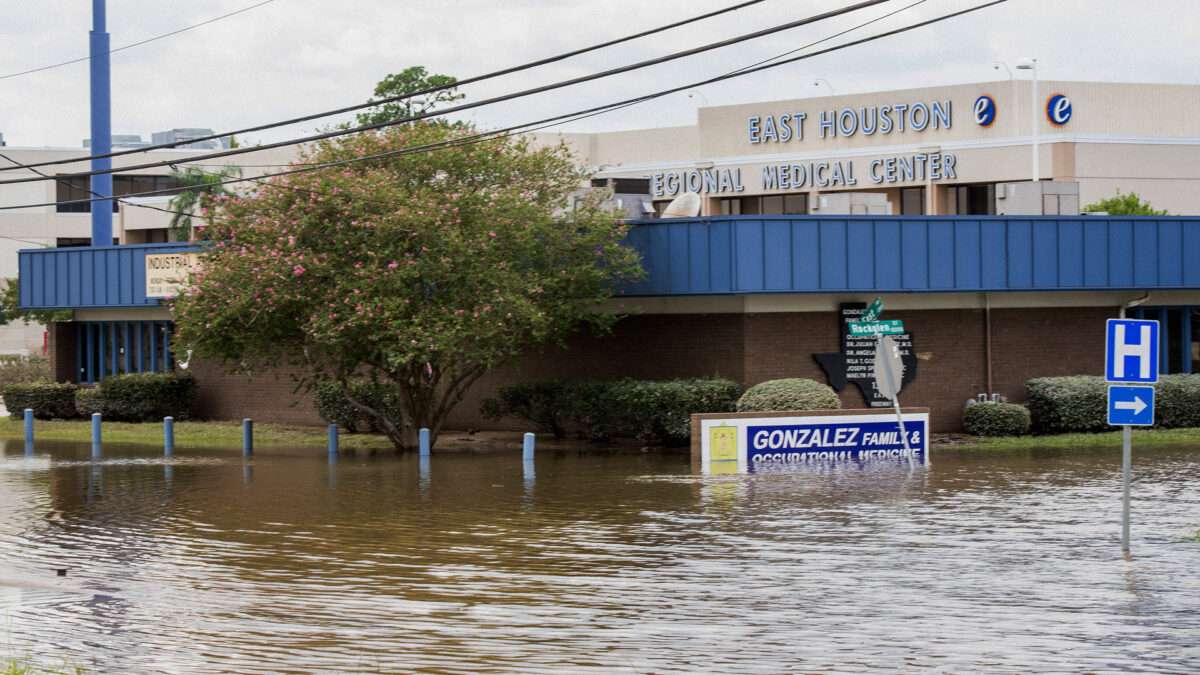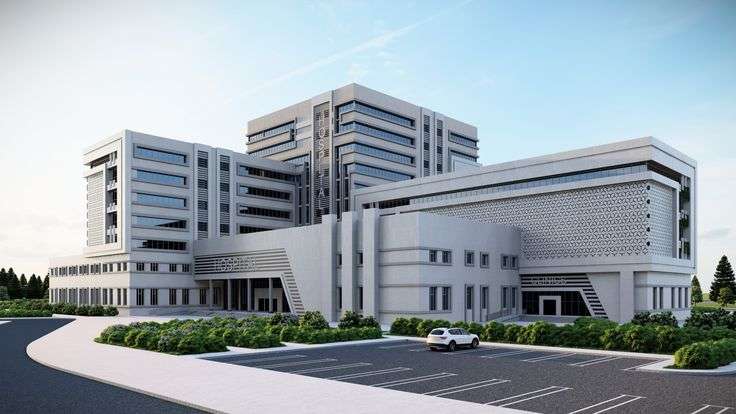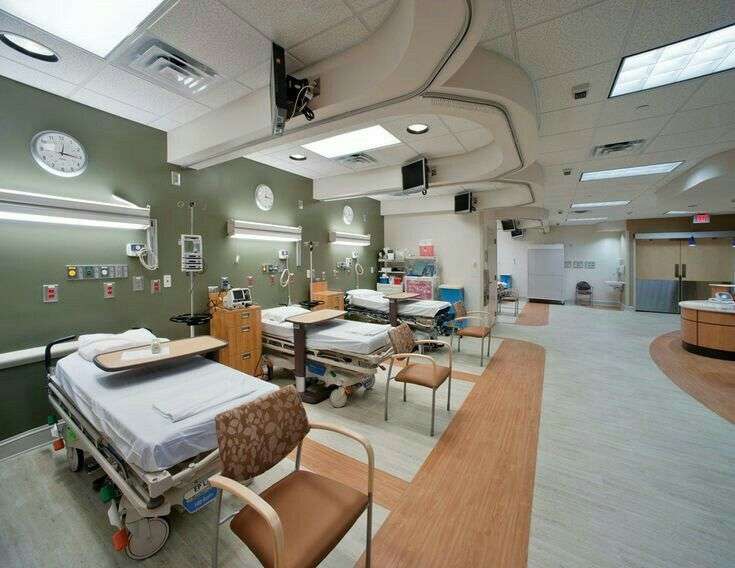
How To Utilize Biophilic Design In Healthcare Architecture
August 20, 2024
Multi-speciality Hospital Guide: You Need To Know
September 5, 2024Introduction
Hospitals are the cornerstone of healthcare, and in times of disaster-like situations, they are essential. Hospitals must remain operational to provide life-saving care when natural calamities such as earthquakes, floods, hurricanes, and storms strike. Building a hospital that can withstand such disasters requires thoughtful planning and specialized construction techniques. In this blog, we’ll explore how to make a hospital while taking precautions against natural calamities, ensuring safety, resilience, and continuity of care.
1. Understanding the Risks: Natural Calamities to Consider
Before construction begins, it’s crucial to identify which natural disasters are most likely to occur in the region. Common calamities include:
- Earthquakes
- Floods
- Hurricanes and Cyclones
- Tornadoes
- Wildfires
- Landslides
Each disaster requires a specific set of construction techniques and precautions to mitigate damage and ensure hospital operations continue during emergencies.
2. Site Selection and Location Planning
Choosing the right location for your hospital is the first step in disaster preparedness.
- Elevated land: For flood-prone areas, select land that is elevated and away from water bodies.
- Seismic zones: In earthquake-prone regions, identify areas with lower seismic activity, or choose land where structural modifications can reduce earthquake damage.
- Wind-resistant areas: In regions prone to hurricanes, avoid locations with high wind exposure, and consider natural barriers that can reduce storm impact.
Careful site selection can significantly reduce a hospital’s vulnerability to natural disasters.
3. Earthquake-Resistant Construction Techniques
In earthquake-prone areas, it is essential to build a hospital that can withstand tremors and aftershocks. Techniques include:
- Base isolation systems: These systems absorb the energy from earthquakes and reduce the shaking experienced by the building.
- Reinforced concrete and steel framing: These materials provide strength and flexibility, allowing the structure to move with the earthquake rather than resist it.
- Flexible piping and electrical systems: To prevent breakage during an earthquake, hospitals should use flexible piping and secure electrical systems that can continue operating even during seismic activity.
4. Flood-proofing and Water Management Systems
Floods can cause severe damage to hospital infrastructure and interrupt essential services. To prevent this:
- Elevate essential equipment: Ensure that all critical hospital functions, such as power generators, medical equipment, and communication systems, are located on higher floors to avoid water damage.
- Install flood barriers: Build retaining walls, levees, and flood barriers to prevent water from entering the hospital premises.
- Improve drainage systems: Design a drainage system that can quickly remove excess water and prevent flooding of lower floors.
By taking these precautions, hospitals can continue functioning even during severe flooding.
5. Hurricane and Storm Resilience
Hurricanes and storms bring strong winds, heavy rains, and debris that can cause significant damage to hospitals. To ensure resilience:
- Wind-resistant windows and doors: Use reinforced windows and doors that can withstand high winds and flying debris.
- Roof design: Construct wind-resistant roofs with materials such as concrete or metal to prevent collapse or leaks.
- Backup power systems: Ensure that the hospital has reliable backup generators to maintain power during and after storms.
With these features, hospitals can protect their structural integrity and maintain operations during hurricanes and storms.
6. Fire-resistant and Wildfire Protection Measures
In areas prone to wildfires, fireproofing is critical. Precautions include:
- Fire-resistant materials: Use fireproof building materials, such as concrete, brick, or gypsum, that are less likely to ignite or spread flames.
- Vegetation management: Maintain a clear space around the hospital, free of flammable vegetation, to reduce the risk of fire spreading to the building.
- Automatic sprinkler systems: Install fire suppression systems, such as automatic sprinklers, to quickly respond to any fire outbreaks.
These measures ensure that hospitals are better protected from wildfires and can respond quickly in the event of a fire.
7. Emergency Power and Water Supplies
A hospital must remain operational during and after a natural disaster. Having access to reliable power and water is essential for patient care.
- Backup generators: Install high-capacity backup generators to maintain electricity for critical systems like ventilators, monitors, and lighting.
- Water storage: Ensure that the hospital has a backup water supply for essential functions, such as patient care, sanitation, and cooling systems.
These emergency supplies allow the hospital to function even when external utilities fail during a disaster.
8. Designing for Patient and Staff Safety
Patient and staff safety should always be a top priority. To ensure this:
- Evacuation routes: Design clear and easily accessible evacuation routes that allow patients and staff to exit safely during emergencies.
- Disaster-resistant communication systems: Install secure and redundant communication systems to maintain contact with emergency services and staff during a disaster.
- Emergency shelters within the hospital: Create designated safe zones that can protect patients and staff from external threats, such as storms or earthquakes.
These safety measures can help ensure that everyone in the hospital remains safe during natural disasters.
9. Long-Term Resilience and Maintenance
Once the hospital is built, ongoing maintenance and preparation are crucial to ensuring long-term resilience.
- Regular inspections: Conduct regular checks on the building’s structural integrity, especially after a natural disaster, to identify and fix potential weaknesses.
- Emergency drills: Train staff in disaster preparedness and conduct regular emergency drills to ensure that everyone knows what to do during a natural calamity.
- Upgrading systems: Periodically upgrade infrastructure, such as electrical systems, water management, and backup power, to keep the hospital prepared for future disasters.
By focusing on long-term resilience, hospitals can stay prepared for any eventuality.
Conclusion
Building a hospital that can withstand natural calamities is essential for ensuring uninterrupted care during emergencies. From choosing the right location to incorporating disaster-resistant construction techniques, every step of the process must prioritize safety and resilience. By taking these precautions, hospitals can continue to serve their communities even in the face of adversity, providing critical care when it’s needed most.
With careful planning and a commitment to safety, you can build a hospital that stands strong against the forces of nature.




